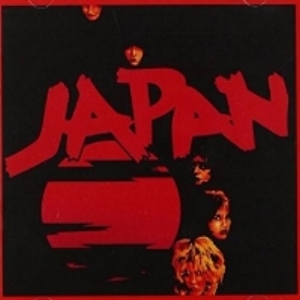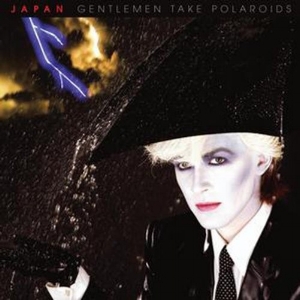Obscure Alternatives: A Retrospective of Japan
Click on the streaming service of your choice to listen along as you read.
Few acts embody the post-punk era of modern music as quintessentially as Japan. From their first release to their last they were only around for five years, moved remarkably through a variety of sounds during that brief time, were never highly successful commercially, yet are respected, fondly remembered, and left an enduring legacy. They were the very essence of the inventive, unbounded, suave, and exciting wave of bands that came out after the unleashing of modern music in 1977 (I’ll be writing on that shortly). If you want one act to carry you from Glam, through punk, into New Wave, up to world music influences on modern rock, then look no further than Japan.
The Playlist
Stateline
Transmission
Lovers on Main Street
Suburban Love
Adolescent Sex
Automatic Gun
…Rhodesia
Obscure Alternatives
Suburban Berlin
Quiet Life
Fall in Love with Me
In Vogue
Alien
European Sun
Gentlemen Take Polaroids
Swing
Ain't that Peculiar
Taking Islands in Africa
The Art of Parties
Talking Drum
Ghosts
Visions of China
I Second that Emotion
All Tomorrow's Parties
Blackwater - Rain Tree Crow
David and Steve Batt were brothers raised in Beckenham, Kent, an area of south London. In 1972, at the ages of 14 and 13 respectively they both started playing guitar and in 1973 formed a band along with Mick Karn (whose real name was Andonis Michaelides), a schoolmate at Catford Boys’ school. At first Mick took on vocals in addition to bass, David played guitar, and Steve moved to the drums. They performed at Mick’s brother’s wedding reception for their first gig in the summer of ’74, at which point David took over on vocals. Lacking a name, David dubbed them ‘Japan’ as a placeholder, picking it up off a travel brochure he saw on a bus while en route. As we know, it would never be replaced as their moniker and David would forever regret ending up with this name, despite the success it would bring to them in their namesake country.
In early 1975 they invited Richard Barbieri into the band to play keyboards and shortly after Rob Dean, establishing themselves as a 5-piece by the end of 1975. In early ’76 they signed with Danny Morgan and Simon Napier-Bell as their management, who got them to start recording and playing more live shows. In May 1977 they won a talent contest and were signed to a contract with German disco label, Hansa.
Stateline \ Non-Album B-side to “Don’t Rain on My Parade” (1977)
The Batt brothers with Andonis Michaelides
The lads were taken with the British glam scene of the mid-70s, and wore make-up and long hair, adopting an androgynous, stylized look. Their early music was glam inspired with a healthy dose of funk, giving it a rock-disco sound. One of the first songs recorded with Hansa was “Stateline” in 1976, which wasn't released until its inclusion as the B-side to their first single, “Don’t Rain on My Parade,” in 1977. Classic rock guitar, thick basslines, subtle keyboard accents, and a groovy melody gave this mid-tempo gem a distinct sound for the time.
The Batt brothers, like Karn, adopted stage names started to by David Sylvian and Steve Jansen. David had a distinct vocal style, high-pitched and filled with disdain, angst, anger, and desperation and employed phrasing reminiscent of one of his heroes, Bryan Ferry, indoctrinating the Japan sound with one of its most distinctive elements. Graham Reid described their early incarnation, “they dressed like the New York Dolls and sounded like the Stones fronted by Bowie in drag.”
Transmission; Lovers on Main Street; Suburban Love; Adolescent Sex \ Adolescent Sex (1978)
Phew, what to say about this album! I’ve been listening to this LP for over thirty years, never tiring of it. It still gives me goosebumps and makes me swoon with all it has to offer. Everything I love about it is what generally invites criticism, namely that it’s a little all over the place. It’s punk, glam, disco, and rock offered by a young bunch of boys in make-up, at the very moment glam had died off and punk was the rage (literally), and as a result no one knew what to make of it. Critics dismissed it as derivative and outdated, dismissing Japan as a failed Bowie/Roxy Music tribute. The problem was, it wasn’t enough of any one genre to grab an audience - everyone had a reason to dislike it. Punkers found it too funk, disco fans found it too guitar-edgy, and pop audiences found it too strange. It didn’t chart and was mostly overlooked in the UK and Europe (and forget about the US, Japan would never make a dent there). However, Adolescent Sex did reach #20 in Japan. That temporary band name that was never replaced seemed to have given them an “in” to that faraway land – they would have 30,000 members in their Japanese fan club before the first album came out there, spurred by attention gained after appearing in photos at a Kate Bush party and the efforts of Simon Napier-Bell.
Barbieri, Karn, Sylvian, Dean, Jansen
Despite the initial mixed reactions Adolescent Sex would prove to have staying power in the annals of music. I believe this album was a critical bridge that showed modern music could be genre-bending. The concept that rock and dance could co-exist was still several years away from being established by the likes of New Order. And the idea that a bunch of pasty white boys from London in lipstick and mascara could lay down thick, funky basslines alongside a raunchy guitar and a shimmering synth-line was also new. It was glam+.
The first side took you on this musical journey, from the opening, ominous winds of “Transmission” to the punky show tune of “Lovers on Main Street.” Those two rockers, with Sylvian’s raw, strained, snarling vocals, played over raw guitars and solid basslines from Karn, bookend “The Unconventional,” which added a disco-funk blend to that sound, and two mid-tempo songs, “Wish You Were Black” and “Performance,” which added 70s organ to all of this for an R&B flavour.
The second side though is where things really started to establish this album as a tour de force and genre-defying work. It’s just four songs, started and finished by songs in excess of seven minutes and nine minutes each. “Suburban Love” started things off in their established funk-rock style, but then drifted off into a long guitar and keyboard sequence where they seemed to trade off from each other seamlessly. As Sylvian breathlessly sang, “Earth wind, earth wind and Fire / Cannot Take me, take me much higher” you can’t help feel it’s a tip of the hat to the giant soul-funk outfit of the time. The song ended in an extended jam like a prog-rock band, flexing its musicianship and exploring its sound in a rich and boundless way that had only been hinted at on the first side. This is, hands down, one of the greatest rock songs ever recorded, and the fact that it’s so widely ignored is a crime.
The next song was the title track, which other than a funky bassline can’t be further in spirit from the prior song. Shorter, more direct, and much more punk in its delivery and guitar sound, “Adolescent Sex” was the defining song of the era in bridging the punk and disco sounds. The problem is that no one was ready to hear those two brought together. It even had a swirling keyboard that hinted at the coming new wave sound. This song eventually found respect among alternative audiences in the 80s, but at the outset failed to launch.
“Communist China” followed and was another punky tune, allowing Sylvian to snarl his way through an outright rocker. Again riding an enervating bassline, it was interrupted for momentary breaks before breaking into its lively guitar melody. It could easily have been a single. It was an early hint of the fascination with Asian countries from Sylvian, whose lyrics were not easily interpreted, but this song definitely had allusions to sex with lines like, “Inserting love into you,” and “Here’s penetration for you.” The song ended somewhat abruptly but was beautifully taken up by the intro to the final song, “Television.” Starting with a descending chaos of instruments, order was restored with a rich bassline that carried the song over sound effects into a searing guitar solo. It was the start of an almost ten-minute journey through funk, disco, rock, punk, and glam that brought the album to an abrupt and cathartic finale and left the listener spent and grinning over the incredible experience this album had wrought. When you talk about great album sides, side two of Adolescent Sex has to rank right up there.
The entire album was great, but it was the concluding four songs that set it apart as something special and uniquely placed in the annals of modern music. “Lovers on Main Street” and “The Unconventional” would be released as singles but neither would chart, just like the album (except for in Japan).
Automatic Gun; …Rhodesia; Obscure Alternatives; Suburban Berlin \ Obscure Alternatives (1978)
As was so common in those days, and especially for a new act, Japan followed its inaugural release with a second album before the year was out. Not surprisingly, it’s wasn't the rich and invigorating package that Adolescent Sex was, yet was still an intriguing and important album for the changes in direction and new flavours it introduced both for Japan and the nascent new rock scene of the late 1970s. Given the lack of success of their debut, Hansa wanted a new release quickly and Sylvian started to step forward in trying to pull the band’s sound together.
The resulting album, Obscure Alternatives, lived mostly in the solid foundation of their rock-funk sound, still with plenty of raw guitar, snarling lyrics, and rich, melodious basslines. Songs like the opener, “Automatic Gun,” offered more of a pop feel, while “…Rhodesia,” settled into a hearty blues rhythm with a reggae guitar riff. “Love is Infectious” had a great little guitar riff throughout, and “Sometimes I Feel So Low” reminded you of the band’s glam underpinnings, sounding like a Bowie song with piano and backing vocals. As the first single, if it was intended to capture an American audience, then it utterly failed.
Jansen, Karn, & Sylvian, in studio 1979
The second side started with the title track, a long, sombre, and atmospheric song that broadened Japan’s musical offering but still sounded like Bowie lifted off the second side of Diamond Dogs or Low. “Deviation” offered a tighter, modern, edgier sound with greater use of keyboards. “Suburban Berlin” might be my favourite track from this album. It had some pop elements, nice and bright keyboards that lighten the band’s sound for the first time, some of that scratch guitar heard on “…Rhodesia,” and of course some funk-laden bass from Mick. However this song was clearly entering new territory for the band, sounding more new wave than glam. It was the strongest signal yet they were catching the zeitgeist of the emerging sound in music. The final song, “The Tenant,” was another Berlin era Bowie-esque song, electronic and moody, a slow instrumental dirge that ended the album on a surprisingly downbeat tone after the brightness of prior song. There was, however, a nice sax throughout provided by Mick, bringing a new element to their mix.
Obscure Alternatives would not be the breakthrough the band was looking for, again not charting in the UK but doing well in Japan (#21, just one spot less than their debut). The second LP did move them away from the glam/funk dominance of the first album while maintaining the snarling, raw, punk sound. The increased use of electronics hinted the band was moving towards new wave. Their US label dropped them after this album, prompting greater urgency to better define their sound and find an identity. Regardless, it would still be a surprise to hear how much they would travel musically when the next album came out.
Life in Tokyo \ Non-album single (1979)
As they were recording their third album, the band teamed with producer Georgio Moroder to write and record the song, “Life in Tokyo,” which they would release in April 1979. It was released in 7” and 12” versions and displayed the inventive and distinctive use of keyboards in which Moroder was famous. It drew from the same well as the hit, “I Feel Love,” he’d had with Donna Summer two years before.
The synth-heavy, danceable song was unlike anything heard on the first two albums. There was barely any guitar, and what there was of it was heavily processed. It was hard to believe this was the same band that recorded “Adolescent Sex” just a year and a half prior. “Life in Tokyo” was a slick, ground breaking song in the new wave genre, with a sublime melody, pulsating dance rhythms, soulful backing vocals, and a fantastic vocal track from Sylvian with no hint of the snarl from the first two albums.
This single was ahead of its time and once again failed to gain the band any chart attention in the UK or elsewhere. They would tour the UK, Japan, and North America, offering their first and last shows in the US and Canada. Check out these reviews from their two shows in Toronto at the Ryerson Theatre – mixed indeed! These shows also featured the arrival of Jane Shorter, who would play sax in their live shows for the next year, and an advance taste of the new sound of their forthcoming album.
Quiet Life; Fall in Love with Me; In Vogue; Alien \ Quiet Life (1979)
The next album was released in Japan, Germany and Canada in December of 1979 and then in the UK the following month, marking the start of the new decade. This new release revealed that Japan had wholeheartedly embraced the new sound heard in “Life in Tokyo.”
The lead single was the title track, which also kicked off the album. Along with “Life in Tokyo,” “Quiet Life” would go on to define Japan as a seminal new wave band. Their use of make-up resulted in them being lumped into the New Romantic movement, a label the band disowned. Sylvian noted their fashion wasn’t something just put on for a trend, but had been a part of their look from the beginning and well before the New Romantics had surfaced. “Quiet Life” was another outstanding synth-dance-pop song. The melody and synth-track were hypnotic, and this time there was a little more guitar thrown in, and though not dominant it gave the song a catchy element which, along with Karn’s thick basslines, separated Japan from the emerging electronic music scene which was still in its infancy.
Next was another outstanding track, “Fall in Love with Me,” which carried the electronic vibe throughout, though with some sax and guitar blends that reminded us this was still a rock band. Again, this was ahead of its time in bringing forward a perfect dance-rock vibe that would be the hallmark of the new wave movement. No longer as funky sounding, Mick Karn was still providing a rich bottom-end to the songs that saved them from the hollow and soulless tone that the early electronic music was prone.
After a lovely, atmospheric, piano and sax instrumental song, “Despair,” the first side closed with “In Vogue.” This sounded a little more like their prior album, but this time the synths carried the song. Again, sax flavoured the backing tracks and Sylvian continued to croon through the songs in his baritone style, reminiscent of Bryan Ferry. It is a smooth, stylized pop song that was a precursor to what would be heard across new wave in the coming few years. Side One of Quiet Life was yet another outstanding album side.
Side Two kicked off with “Halloween,” (I included this in my New Wave write-up), a song very similar to “In Vogue,” though this time with a little more pace. It was catchy as hell and moved the album into a more rock-tinged style despite the keyboards still playing in the main. Next was a cover of The Velvet Underground’s, “All Tomorrow’s Parties,” a song from the famous Velvet Underground and Nico album. It was a wonderful tribute, holding the essence of the original but updating to a modern sound, with an echoey organ, raw guitar, a ticking drumbeat, and sax accents to give it flavour. It would be the second single from the album and yet again would fail to chart.
The album continued with “Alien,” which is one of those album tracks that makes you appreciate the era of the album, in which the non-singles could surprise and delight a listener with the discovery. It was punctuated by a sly, little sax-like synth riff, and guitar accents that Duran Duran would rip-off wholeheartedly in the ensuing years (members of Duran Duran attended a Japan concert in 1978 and cited them as an influence, even asking Sylvian to produce them, to which he declined). This was a song that once again revealed Mick Karn’s playing, and how his style was a critical element of Japan’s brand. Typically playing a fretless bass, he’d moved from funk to a still rich and melodious style that carried many of the songs. His was a unique sound that, along with Sylvian’s voice, gave Japan a distinctive identity that few have been able to copy.
The album concluded with “Other Side of Life,” which like their prior album provided a more sombre and downbeat tone to the finale. However, this song was an exquisite ballad, with beautiful guitar and a great vocal performance from David, who on this album really came into his own as more than just a high-pitched, angry punk, settling evermore into a smooth, sultry, baritone singer. The final song clocked-in at almost seven and a half minutes and provided a little drama to the mix, as even the synths added a classical string feel to the backdrop.
Quiet Life was one of the greatest albums of its era, and was one of the most important albums in launching the New Wave movement. It showed electronics could work with rock and that modern pop music could be artistic and innovative, and not just opposed to the traditional rock styles. It would finally get Japan a little love from their native audiences, reaching #53 on the UK Album chart as well once again charting in Japan (#24). It would take awhile but Quiet Life would eventually get the band their first gold record. Along with Adolescent Sex, Japan had now delivered two landmark albums but were yet to receive the recognition these works so richly deserved.
European Son \ Non-album B-side & Single (1980/81)
This song could be inserted in a few places within the chronology of Japan’s discography. Originally recorded in 1979 with Simon Napier-Bell, it would be remixed by John Punter (who worked with Roxy Music) as part of the Quiet Life sessions and put out in the spring of 1980 as the B-side to the Japanese release of “I Second that Emotion,” another fantastic cover song, this time of a Smokey Robinson classic. It would receive its first UK release as the B-side to “Life in Tokyo” when it was re-released in 1981. “European Son” would then get its due as an A-side single after another remix, this time from Steve Nye, and an overdub of the bass from Mick, and released in 1982. We’ll get into why their songs were released so many times a bit later.
Gentlemen Take Polaroids; Swing; Ain't that Peculiar; Taking Islands in Africa \ Gentlemen Take Polaroids (1980)
I’m not sure if, after three unsuccessful albums, Hansa decided they’d had enough of Japan, or whether after making three amazing albums and not getting any success out of them, the band decided to fire their label, but either way they parted ways and Japan signed with Virgin Records. They releasing their next album, Gentlemen Take Polaroids, in October 1980. Virgin would promote the album with the proclamation that David Sylvian was “the most beautiful man in the world,” which drew some attention.
The album was preceded by its first single, the title track which also was the lead song on the album. It was a nice continuance of the sound established on Quiet Life. Barbieri was really getting a nice blend of sounds and melodies from the electronics, which flowed beautifully over Karn’s signature bass. Steve was also using electronics, integrating drum machines into his repertoire along with his traditional playing. What is generally missing was the guitar, now reduced to minor and backing elements, a fact that was not sitting well with Rob Dean. “Gentlemen Take Polaroids” would be the first single to finally get Japan on the UK charts, reaching #60. Perhaps getting Virgin, a UK label, behind them, was the right choice after all?
The second song was “Swing,” with another Berlin-Bowie atmospheric intro, it brought a bit of the band's funkiness back, now integrated into their synth-pop compositions. The rhythm was also buoyed by sax, much the same as was done with the synth in “Alien.” The rest of the side moved through more Bowie moodiness with “Burning Bridges” (a last-minute replacement that would have been better left out or placed elsewhere on the album than the third slot) and the mediocre “My New Career,” a song that struggled to provide either a melody or rhythm to latch onto – though it was a nice respite from the sleek electronic melodies of the rest of the album. What was intriguing about this song is it sounded a lot like what would be heard on their next album.
The second side led with “Methods of Dance,” which got the album jumping a bit more though again leaned heavier on rhythm than melody. There was a backing vocal from someone named Cyo, whose identity is a bit of a mystery but she added a lovely sound to this song. “Ain’t that Peculiar” was another Smokey Robinson cover and really showed how rhythm was taking over as they seemed to be dwelling in the dips and swings that songs like this provided. Karn could really drive songs like this. “Nighporter” followed, another quieter, long, slow song in the third slot of the side. It was led by piano this time, providing a change from the rest of the album. In this case, deep on the second side, it was a lovely and well-placed song on the album and led nicely into the final track, “Taking Islands in Africa.” This song was significant because it was co-written and co-performed by Ryuichi Sakamoto. He was a Japanese composer and electronic music pioneer, part of the trio Yellow Magic Orchestra which had been formed in 1978. The band's connection to their namesake country kept getting stronger. They had already toured there in 1979 and would return there to support this album. “Taking Islands…” was a purely electronic song, a little experimental for the time, like a new age take on new wave. It was clearly a result of the influence of having met Sakamoto and having listened to his music. Sylvian and Sakamoto would continue to work together in parallel and after Japan's conclusion.
Sylvian & Sakamoto
Perhaps it was fitting they finished with a guitar-less song since this album would be the last for Rob Dean, who would leave the band early in 1981 frustrated with their electronic direction and lack of guitar. It was a shame given what a great player he was and how well he’d contributed to the their sound even in the transition from the glam and punk to new wave and synth. His departure belied an issue, and that was the more assertive control taken by David Sylvian over the band's creative output. While Japan was gaining more success, it was not making for a happy family within the ranks its members.
Steve Jansen also did photography. The pictures above were taken by him for Gentlemen Take Polaroids photo shoot. From left to right: David Sylvian, Mick Karn, Rob Dean, RIchard Barbieri, and Steve Jansen
Gentlemen Take Polaroids would grow the band’s profile. It was critically praised and would reach #51 on the UK Album chart, two spots higher than Quiet Life. The band would also make its first TV appearance in the UK on The Old Grey Whistle Test.
The Art of Parties; Talking Drum; Ghosts; Visions of China \ Tin Drum (1981)
Just as the band was gaining respect and attention, they were coming apart at the seams. Tin Drum, their fifth album in their four-year recording career would be their last. Perhaps things weren’t helped when Mick’s girlfriend moved in with David? Regardless, Tin Drum would also be their most inventive and distinctive album, furthering the synth genre and producing one of the most unique albums of the era (and yes, I said the same about Adolescent Sex and Quiet Life).
This was the only Japan album owned by my brother (though he had Adolescent Sex and Quiet Life on a cassette tape he’d recorded off someone else, but I wouldn’t discover that until later). I wouldn’t start listening to this album until a few years later when I was a teen (I was just eleven when this album was released) and until I bought Assemblage this album would be my primary identification of Japan's sound. When I would later discover their earlier work it was a struggle to reconcile the same band to the likes of “Adolescent Sex,” “Life in Tokyo” and Tin Drum. But while the world was swooning over the likes of U2, Bruce Springsteen, Prince, and Michael Jackson, holding an album as foreign looking and sounding as Tin Drum made me feel very cool and different from my peers. For my young adolescent self, that was pure gold.
Tin Drum would be released in November of 1981, and would receive a boost from their prior label Hansa, which was looking to cash in on their old act that was growing in popularity. It packaged a selection of singles and album tracks onto an album called Assemblage, which would be the first Japan album I would buy (years later) and proceeded to play it within an inch of its life. Released in September 1981, two months before Japan’s next album, Hansa would release no less than six songs from it, managing to gain some of the success from the band that had eluded them when under contract. Its influence on me is apparent as every song from it except for “Communist China” is on this playlist.
That compilation would stand in stark contrast to the album that came out soon after. Tin Drum naturally lacked guitar as Dean wasn’t replaced, though David would play a bit in places, and Karn, Jansen and Barbieri moved into new and interesting realms with their instruments. Drawing heavily from Chinese music and culture, the album has much more prominent drum usage and a compendium of electronic effects, and is almost entirely rhythm based. It is generally down-tempo, leaning into their moodier side with full effect.
The album leads off with “The Art of Parties,” a beat-driven song that looped with electronics and Sylvian’s swooping vocals. It was released as the first single in the spring, many months ahead of the album, and reached #48 on the UK charts, a new high for Japan. It’s followed on the album by “Talking Drum,” a mid-tempo song in which the drums, bass and synth frolic together in an exotic swirl. “Ghosts” followed, a slow, electronic song that amazingly was released as the third single from the album and even more shocking, brought the band their first top ten hit, reaching #5. For such an unassuming song, to reach that high on the chart when compared to the many more impressive songs they’d written suggested something was up, and it was – but more on that in a bit. “Ghosts” was a song that embodied the musical direction Sylvian wanted to explore, and it is a song he’s returned to throughout his solo career. The first side of the album concluded with “Canton,” which rode a Chinese musical style through a mix of electronic effects, synth, and Karn’s expressive bass work. It has an uplifting tone compared to the rest of side one.
Side two started with “Still Life in Mobile Homes,” a song with a little more jump than side one – literally, the song seemed to jump about, with a rhythm that seemed to stop and start and loop, as shimmering synths and Sylvian’s vocals carried a rather accessible and pop-sounding melody. Therefore this most closely resembled a pop song on the album, but even calling it that is probably a stretch. It was almost like the band was employing a jazz approach to its compositions. Next was “Visions of China,” the song I grabbed onto the most on the album and still one of my favourite songs by Japan. One of the few songs of theirs to be carried by percussion, it again brought a strong Chinese feel into the sound, and David’s vocals were sublime. Once again it was a song that jumped and looped, with a beautiful, melodious chorus that gives respite to the dominant rhythms of the music. The song had a great percussion interlude that led back into the chorus and then into a repeating loop to finish the song, creating a tension that drew you in, waiting to hear how the song would conclude. It’s such a unique and brilliant song. It was the second single and reached #32, which would have been their highest charting single at that point if not for an intrusion from the past, but again more on that later (it would have been usurped anyway by "Ghosts" immediately after, regardless). “Sons of Pioneers” followed which was a great instrumental once again reliant on a bass and drum rhythm interspersed with electronic effects and haunting synths. The album finished with “Cantonese Boy,” which would be the fourth single from the album and reached #24 on the chart, not quite equaling the #5 spot that “Ghosts” achieved in front of it. It’s one of the most upbeat songs on the album, blending more Chinese flavour into their percussive rhythms now well established throughout the album.
Tin Drum would be the band’s most successful, reaching #12 on the UK charts. It was undoubtedly helped by Hansa re-releasing Assemblage (which reached #26 on the album charts) along with so many of their songs, which by 1981 found a more receptive audience among the explosion of synth-based new wave songs and bands. “Quiet Life” would be released, this time as both 7” and 12” singles and with an extended version for the first time. It was the third time being released after its initial release in 1979 and as the B-side to “I Second that Emotion” in 1980. The third try in 1981 was the charm and this time it caught the charts, reaching #19 and giving the band its first top 20 single. The same would be done with “Life in Tokyo,” which would again fail to chart, however a Steve Nye remix of “European Son” would reach #31 that year. "Life in Tokyo” would be given a third life in 1982, and this time helped by the success of Tin Drum would reach #28 on the singles chart. It was remarkable to have the band's back catalogue suddenly catch on, driving their current music, so different in style, to greater success.
I Second that Emotion (1982) \ All Tomorrow’s Parties (1983)
Japan spent most of 1982 riding high on a successful album and a series of charting singles, finally receiving the recognition they’d deserved from the beginning. “I Second that Emotion” continued with Hansa’s re-releases and on its second try reached #9, giving the band its second top ten hit. In addition to “Life in Tokyo” (noted above) and the Tin Drum singles, “Nightporter” from Gentlemen would be released by Virgin and would reach #29. This would total five charting singles released in 1982, beating the four they’d achieved in 1981.
Despite the increasing success and attention, the band was literally breaking apart. Sylvian has stated they knew they were going to pack it in at the start of ’82, so they went through the year knowing this was their last run. Mick Karn recorded and released his first solo album that year, perhaps needing a break from the band after losing his girlfriend, Yuka Fujii, to David (she also provided backing vocals on Tin Drum, leading me to view this as a bit of ‘Yoko Ono’ situation). Japan would do one more TV appearance on The Old Grey Whistle Test, then a run of six sold-out shows at the Hammersmith Odeon in November 1982, and then call it quits.
Fujii & Sylvian
Perhaps throwing salt in the wound, a live album recorded from those final six shows, Oil on Canvas, was released in 1983 and went to #5, making it the band’s only top ten album. Hansa continued to cash in also in 1983, re-releasing “All Tomorrow’s Parties” and watching it go to #38, just beating out the live version of “Canton” which would peak at #42.
Blackwater \ Rain Tree Crow (1991)
After their break-up, Sylvian would work more with Sakamoto and enjoy two hit singles with him in 1982 and ’83 before going on to record his first solo album, Brilliant Trees, in 1984. It would reach #4, surpassing anything achieved by Japan, but no doubt aided by the band’s legacy and the thirst for more of their music. It is a quiet and atmospheric album, and not the type of music to chart highly.
Mick Karn, cherished for his distinct sound, would play with many artists including Kate Bush, Midge Ure, and Peter Murphy (in the duo, Dali’s Car). Dean would also play with other artists and Jansen and Barbieri would team up as The Dolphin Brothers.
In 1990, Sylvian, Karn, Barbieri and Jansen would reunite and record under the band name, Rain Tree Crow. They released an album of the same name in 1991. The new name was meant to create a break from their past, though all but Sylvian were willing to use the Japan name when the music ended up being so consistent with their legacy sound. Indeed, it is more of the atmospheric, slow, electronic music all of them seemed to continue exploring in their solo careers after having dabbled in it during Gentlemen and Tin Drum. “Blackwater” was a beautiful song that would reach #62 in the UK Singles chart while the album peaked at #24.
Thoughts of further work, as planned, were dashed when friction between Sylvian and the others arose again. Barbieri would soon join the band Porcupine Tree as well as continuing to work with Jansen and Karn on various projects. Mick Karn has released many albums both with Barbieri and solo, as well as continuing to contribute to others’ work. He sadly passed away from cancer in 2011 at the age of 52. Sylvian, perhaps not surprisingly, has stayed solo though has had some contributions from his ex-bandmates and has done several collaborations. As of 2014 he has now released nine solo records.
When you look at Japan’s career, it is quite a remarkable thing. Listen to “Lovers on Main Street” and then “Visions of China” and it’s hard to believe it’s the same band only three years apart. They released four albums in three years that were largely ignored; they then found success with their most remote and experimental album as their earlier music caught on and propelled them onto the charts; and then broke up at their commercial peak. It once again goes to show how the tensions amongst creative personalities can both make for an incredibly productive band while also pulling it apart.
Sylvian, Jansen, Karn, Barbieri, and Dean
David Sylvian was one of those iconic personalities of the 1980s, carrying Japan’s glam/new wave image with a cool and dispassionate air while also snarling and crooning his way through a broad array of songs. He fits in that style of David Bowie/Bryan Ferry/Richard Butler who brought style and fashion to rock music along with an immediately identifiable voice. Clearly an imaginative writer, his force of conviction for their music couldn’t allow the space for the others to thrive, and what a shame given the incredible talent and input he had from his band. There is no other bass player quite like Mick Karn, who moved from the thick funk of their first two albums to the sublime, jazz and Chinese flavoured playing on their last album. And without Richard Barbieri, the brilliance of their middle albums and those standout, new wave singles, would never have happened.
Japan issued three of the most inventive and influential albums in a period of music that is already noted for being one of the most creative and influential of modern music. They helped bridged the gap from glam and rock into punk and new wave more convincingly than any other acts also navigating those waters. Many evolved in that time from rock and punk to new wave and dance, but very few touched as many genres as solidly as Japan. They were one-of-a-kind, ahead of their time, important contributors to the creation of new wave, and left a musical legacy that was brief and brilliant. Enjoy.



































